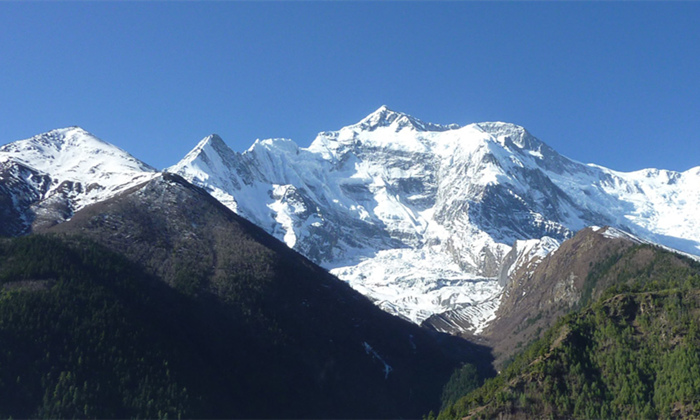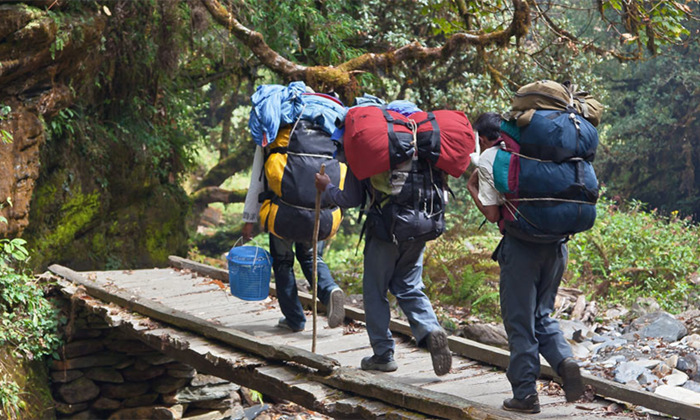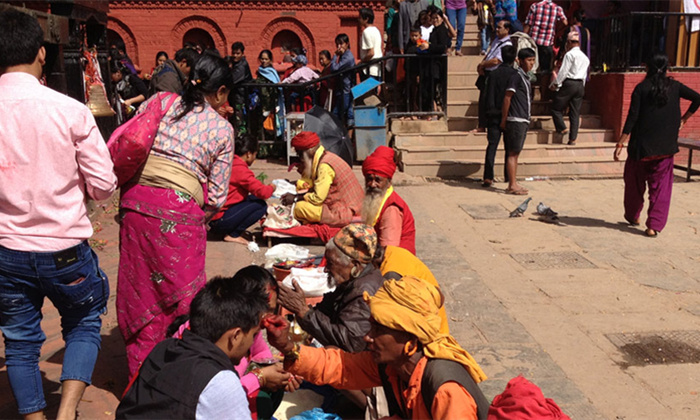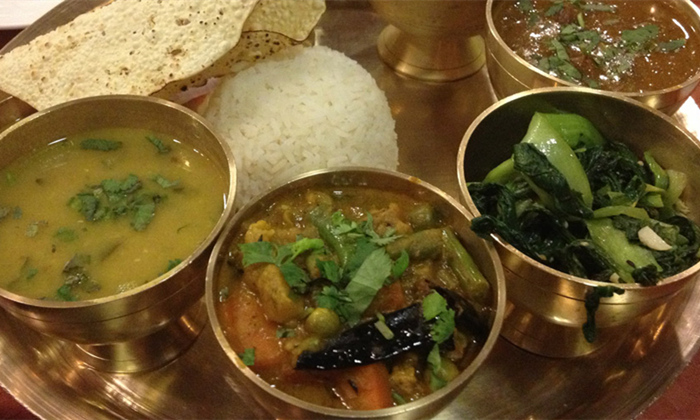Nepal Travel Tips
Nestled in the Himalayas, Nepal has long been a must visit South Asia tourist destination, and attracting travelers by its rich cultural heritage and spectacular mountain landscape. Our Nepal travel tips page is specially designed to make your Nepal trip come true, such as Best Time to Visit, Tips for Hiking and Trekking, What to Pack, etc.

Best Time to Visit Nepal
The best time to visit Nepal depends heavily on whether you plan to visit Chitwan National Park, Kathmandu or Everest Base Camp. Nepal is broadly temperate, with four main seasons centred around the summer monsoon. Winter (Dec & Jan) is usually clear and stable. In trekking areas, the fierce cold can completely shut down lodge operation. Spring (Feb to mid-April) is the second tourist season to view wildlife with its warmer weather and longer days. The downsides are that haze can obscure the mountains. Stifling heat, afternoon clouds, rain showers and edginess: this is the classic time for popular unrest and illness. If this happens to be your time of travel then go to higher elevation where the temperatures are more tolerable. People here welcome the monsoon which may be up down a few weeks from year to year.
Tips for Hiking and Trekking
Nepal offers some of the world's best trekking opportunities, but there are some things you know before you get started. The high terrain of Nepal is a good workout, but it can also be quite dangerous if you are not prepared. You need to be physically fit before embarking on a trekking journey. In Nepal, it is definitely not going to be flat ground. The more prepared you are for walking uphill for long periods of time, the better. You should also have your doctor check your physical health to make sure your body can head up those mountains.

Good hiking shoes are important. You need to find some that are not only comfortable and lightweight but also have a good grip and protect your feet from foreign elements. Next, you should prepare your packing bag. When going on long and steep treks, it is important to keep things as lightweight as possible. Make sure to stay fit and have a feel for what it's like to trek before leaving for Nepal. It will help to be prepared if you want to get the most out of the country's breathtaking scenery and enjoy the company of the trekkers around you. If you are ready for this journey at the beginning, you will leave with a wonderful sense of pride and accomplishment at the end. Come see what trekking in Nepal is all about!
How to Behave
Nepal can be quite an interesting country to visit due to its unique and sometimes confusing customs. Locals are often very friendly and might approach you with questions, goods they are selling, and cameras to take pictures with you. One thing you should be aware of is how to say "yes" and "no" to strangers who want something from you. The gesture for "no" is one hand extended with the palm forwards. Do not shake your head. Why? Because it is similar to the gesture for "yes": a sideways tilt of the head from one side to the other.
The forehead is the most sacred part of the body in Nepal. It is therefore considered rude to touch an adult Nepali's head. Many Hindu temples are off-limits to nonbelievers, so be appreciative if you are given the chance to enter one. Be respectful of the customs: take your shoes off before entering, and do not take any photos unless you have been given clear permission. Most locals wear very conservative clothing, so be aware of how your clothing may appear to them. Men should always wear shirts in public, and they should try to wear long pants, especially when entering a monastery or temple.
There are many customs in Nepal related to food, and these are very important to follow. If you are eating something with your hands, do so with your right hand only, as the left hand is only used for washing after using the restroom. You should try to give and receive anything and everything with only your right hand. It is also important to remember that the people of Nepal do not eat beef. The cow is the national animal of Nepal and is sacred in the Hindu religion.
Currency and Credit Cards
There are a number of locations with which to exchange for your currency into Nepalese rupees, and one of the best places is at the Kathmandu airport exchange counter. There are also banks and designated money exchangers in Kathmandu and Pokhara. Money exchangers offer slightly better rates than the banks, but the commissions are higher. There is also a "black market" for US dollars where you can get a better deal than the legal exchanges. However, since the Nepalese government liberalized its foreign exchange regime, the "premium" for black market currency trades has decreased. Note that the US dollar is the most widely accepted currency to exchange. Credit cards (Visa, MasterCard, and American Express) are accepted at most major hotels, restaurants, and shops. In addition.

Internet and SIM Cards
The Internet is not very good in Nepal, but mobile coverage is increasing and is now in some of the popular trekking areas. Thamel in Kathmandu and Lakeside in Pokhara have the fastest connections, and all of the major towns have mobile internet. You can choose to use a foreign SIM card in Nepal, but it is much cheaper to simply buy a local SIM card. State-owned service provider Nepal Telecom (NTC) has the widest coverage area, and it offers pre-paid SIM cards with CDMA service. Privately owned Ncell is the country's largest mobile network provider. Regardless of the provider, getting a SIM card is as easy as walking into a corner store with a copy of your passport and signing up to get a card on the spot.
What to Pack
Nepal is a country of extremes in terms of temperature and altitude changes from the north to the south; what you need to bring to Nepal will simply depend on where you intend to go in the country. The northern mountains are not as warm during the day, but if you are hiking, the exercise will keep you warm enough that you can get by with light clothing. South in the Terai plain region of the country, it is very warm during the day but can be somewhat cool at night. Kathmandu is warm during the day, which means light clothing is just fine. At night, however, temperatures can get quite chilly; make sure you pack some warm clothes. In addition, it's best to bring a hat and sunglasses to protect yourself from the bright rays.
Safety and Health
Nepal is a very safe country for visiting foreigners and locals. However, there are occasionally pickpockets around popular tourist areas and busy streets, so make sure that you protect your belongings. Due to local religion and culture, there will likely be a number of stray dogs along the streets. Some of these dogs are not trained, and you should stay away from them to avoid any accidents. Please prepare for travel-related ailments; we recommend medicines for dehydration and diarrhea as well as insect repellent and sunscreen. In addition, drink only bottled water, as the local tap water is not safe to drink.
Food and Drink
Nepal is known as the budget eating capital of Asia, but much of this popularity stems from the country's wide variety of Westernized dishes that do not truly reflect local culinary traditions. Tourist favorites found here include pizza, steak, and fries. Fortunately, there are plenty of flavorful local dishes to choose from. Daal bhaat is the national dish of Nepal. It consists of steamed rice, cooked lentils, and various curried vegetables. The indigenous Newar people of Kathmandu have their own unique dishes of spicy meats and vegetables. Up in the mountainous regions, the traditional diet is made up of noodle soups, potatoes, and toasted flour. In the Terai region, you will find a cuisine heavily centered around Indian curries, breads, and sweet snacks.

Water is not safe to drink from the tap, so it is a good idea to pass if you are offered water at a restaurant. Bottled water is available, but make sure it has been properly sealed. You can also choose to boil and purify water on your own. A standard variety of soft drinks is available everywhere. Tea is also served in most places; the traditional tea is boiled with milk and sugar, and locals like to add spices like ginger, pepper, or cardamom. Local coffee and espressos are offered in an increasing part of the country, and the local custom is to add milk to all coffee drinks. Beer is served at most Nepalese restaurants and can pair well with some of the local foods.
Nestled in the Himalayas, Nepal has long been a must visit South Asia tourist destination, and attracting travelers by its rich cultural heritage and spectacular mountain landscape. Our Nepal travel tips page is specially designed to make your Nepal trip come true, such as Best Time to Visit, Tips for Hiking and Trekking, What to Pack, etc.

Best Time to Visit Nepal
The best time to visit Nepal depends heavily on whether you plan to visit Chitwan National Park, Kathmandu or Everest Base Camp. Nepal is broadly temperate, with four main seasons centred around the summer monsoon. Winter (Dec & Jan) is usually clear and stable. In trekking areas, the fierce cold can completely shut down lodge operation. Spring (Feb to mid-April) is the second tourist season to view wildlife with its warmer weather and longer days. The downsides are that haze can obscure the mountains. Stifling heat, afternoon clouds, rain showers and edginess: this is the classic time for popular unrest and illness. If this happens to be your time of travel then go to higher elevation where the temperatures are more tolerable. People here welcome the monsoon which may be up down a few weeks from year to year.
Tips for Hiking and Trekking
Nepal offers some of the world's best trekking opportunities, but there are some things you know before you get started. The high terrain of Nepal is a good workout, but it can also be quite dangerous if you are not prepared. You need to be physically fit before embarking on a trekking journey. In Nepal, it is definitely not going to be flat ground. The more prepared you are for walking uphill for long periods of time, the better. You should also have your doctor check your physical health to make sure your body can head up those mountains.

Good hiking shoes are important. You need to find some that are not only comfortable and lightweight but also have a good grip and protect your feet from foreign elements. Next, you should prepare your packing bag. When going on long and steep treks, it is important to keep things as lightweight as possible. Make sure to stay fit and have a feel for what it's like to trek before leaving for Nepal. It will help to be prepared if you want to get the most out of the country's breathtaking scenery and enjoy the company of the trekkers around you. If you are ready for this journey at the beginning, you will leave with a wonderful sense of pride and accomplishment at the end. Come see what trekking in Nepal is all about!
How to Behave
Nepal can be quite an interesting country to visit due to its unique and sometimes confusing customs. Locals are often very friendly and might approach you with questions, goods they are selling, and cameras to take pictures with you. One thing you should be aware of is how to say "yes" and "no" to strangers who want something from you. The gesture for "no" is one hand extended with the palm forwards. Do not shake your head. Why? Because it is similar to the gesture for "yes": a sideways tilt of the head from one side to the other.
The forehead is the most sacred part of the body in Nepal. It is therefore considered rude to touch an adult Nepali's head. Many Hindu temples are off-limits to nonbelievers, so be appreciative if you are given the chance to enter one. Be respectful of the customs: take your shoes off before entering, and do not take any photos unless you have been given clear permission. Most locals wear very conservative clothing, so be aware of how your clothing may appear to them. Men should always wear shirts in public, and they should try to wear long pants, especially when entering a monastery or temple.
There are many customs in Nepal related to food, and these are very important to follow. If you are eating something with your hands, do so with your right hand only, as the left hand is only used for washing after using the restroom. You should try to give and receive anything and everything with only your right hand. It is also important to remember that the people of Nepal do not eat beef. The cow is the national animal of Nepal and is sacred in the Hindu religion.
Currency and Credit Cards
There are a number of locations with which to exchange for your currency into Nepalese rupees, and one of the best places is at the Kathmandu airport exchange counter. There are also banks and designated money exchangers in Kathmandu and Pokhara. Money exchangers offer slightly better rates than the banks, but the commissions are higher. There is also a "black market" for US dollars where you can get a better deal than the legal exchanges. However, since the Nepalese government liberalized its foreign exchange regime, the "premium" for black market currency trades has decreased. Note that the US dollar is the most widely accepted currency to exchange. Credit cards (Visa, MasterCard, and American Express) are accepted at most major hotels, restaurants, and shops. In addition.

Internet and SIM Cards
The Internet is not very good in Nepal, but mobile coverage is increasing and is now in some of the popular trekking areas. Thamel in Kathmandu and Lakeside in Pokhara have the fastest connections, and all of the major towns have mobile internet. You can choose to use a foreign SIM card in Nepal, but it is much cheaper to simply buy a local SIM card. State-owned service provider Nepal Telecom (NTC) has the widest coverage area, and it offers pre-paid SIM cards with CDMA service. Privately owned Ncell is the country's largest mobile network provider. Regardless of the provider, getting a SIM card is as easy as walking into a corner store with a copy of your passport and signing up to get a card on the spot.
What to Pack
Nepal is a country of extremes in terms of temperature and altitude changes from the north to the south; what you need to bring to Nepal will simply depend on where you intend to go in the country. The northern mountains are not as warm during the day, but if you are hiking, the exercise will keep you warm enough that you can get by with light clothing. South in the Terai plain region of the country, it is very warm during the day but can be somewhat cool at night. Kathmandu is warm during the day, which means light clothing is just fine. At night, however, temperatures can get quite chilly; make sure you pack some warm clothes. In addition, it's best to bring a hat and sunglasses to protect yourself from the bright rays.
Safety and Health
Nepal is a very safe country for visiting foreigners and locals. However, there are occasionally pickpockets around popular tourist areas and busy streets, so make sure that you protect your belongings. Due to local religion and culture, there will likely be a number of stray dogs along the streets. Some of these dogs are not trained, and you should stay away from them to avoid any accidents. Please prepare for travel-related ailments; we recommend medicines for dehydration and diarrhea as well as insect repellent and sunscreen. In addition, drink only bottled water, as the local tap water is not safe to drink.
Food and Drink
Nepal is known as the budget eating capital of Asia, but much of this popularity stems from the country's wide variety of Westernized dishes that do not truly reflect local culinary traditions. Tourist favorites found here include pizza, steak, and fries. Fortunately, there are plenty of flavorful local dishes to choose from. Daal bhaat is the national dish of Nepal. It consists of steamed rice, cooked lentils, and various curried vegetables. The indigenous Newar people of Kathmandu have their own unique dishes of spicy meats and vegetables. Up in the mountainous regions, the traditional diet is made up of noodle soups, potatoes, and toasted flour. In the Terai region, you will find a cuisine heavily centered around Indian curries, breads, and sweet snacks.

Water is not safe to drink from the tap, so it is a good idea to pass if you are offered water at a restaurant. Bottled water is available, but make sure it has been properly sealed. You can also choose to boil and purify water on your own. A standard variety of soft drinks is available everywhere. Tea is also served in most places; the traditional tea is boiled with milk and sugar, and locals like to add spices like ginger, pepper, or cardamom. Local coffee and espressos are offered in an increasing part of the country, and the local custom is to add milk to all coffee drinks. Beer is served at most Nepalese restaurants and can pair well with some of the local foods.
Related Articles You May Like
Most Frequently Asked Questions
Japan Office
- Tel: +81 50-3701-6391
- Email: info@japanholiday.com
- Working Hours: 8am-7pm, (Japan)
USA Office
- Tel: +1-6265617117
- Email: info@japanholiday.com
- Working Hours: 8am-7pm, Pacific Time

